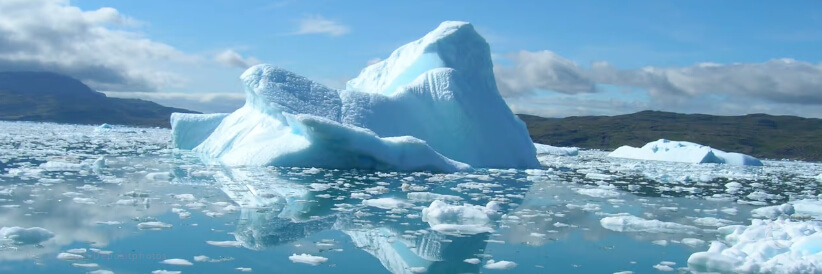Climate change is inflicting a devastating toll on the world’s oceans, which are increasingly “hot, sour and breathless.” Record ocean heat, acidification, and de-oxygenation have major implications for marine life, ecosystems, food security, and socio-economic development, the 2022 UN Ocean Conference heard.
“There is no way to deal with the climate problem without the ocean, and no way to deal with the ocean problem without the climate,” said US Special Presidential Envoy for Climate, John Kerry.
Speaking at an Interactive Dialogue on ocean acidification, deoxygenation, and ocean warming, Mr. Kerry said that the rate of change was “alarming even the most neutral scientists.”
“These consequences will affect every single human being on the planet,” said Mr. Kerry.
Jamaican minister Matthew Samuda said Small Island Developing States faced an existential threat. The theme of the Conference in Lisbon is “Scaling up ocean action based on science and innovation for the implementation of Goal 14: stocktaking, partnerships, and solutions.” This is in line with the UN Decade of Ocean Science for Sustainable Development, which stresses the critical need for scientific knowledge and marine technology to build ocean resilience.
The ocean absorbs more than 90 percent of the excess heat trapped by greenhouse gases; absorbs 23 percent of carbon dioxide emissions, and is the source of more than half of the oxygen the world breathe.
According to the World Meteorological Organization’s State of the Global Climate in 2021 report, sea-level rise, ocean heat, ocean acidification, and greenhouse gas concentrations set new records in 2021.
The upper 2000m of the ocean continued to warm in 2021 and it is expected that it will continue to warm in the future – a change which is irreversible on centennial to millennial time scales. Ocean warming rates show a particularly strong increase in the past two decades. The warmth is penetrating to ever deeper levels. Much of the ocean experienced at least one ‘strong’ marine heatwave at some point in 2021, which affects marine life, and ecosystems, WMO Director of Services Dr. Johan Stander told the panel session.
The global mean sea level reached a new record high in 2021, after increasing at an average of 4.5 mm per year over the period 2013 -2021. This is more than double the rate between 1993 and 2002 and is mainly due to the accelerated loss of ice mass from the ice sheets. This has major implications for hundreds of millions of coastal dwellers and increases vulnerability to tropical cyclones, he said.
Ocean acidification threatens organisms and ecosystem services, and hence food security, tourism, and coastal protection. As the pH of the ocean decreases, its capacity to absorb CO2 from the atmosphere also declines.
The Intergovernmental Panel on Climate Change’s recent report concluded that “there is very high confidence that open ocean surface pH is now the lowest it has been for at least 26,000 years and current rates of pH change are unprecedented since at least that time.”
The global mean sea level reached a new record high in 2021, after increasing at an average of 4.5 mm per year over the period 2013 -2021. This is more than double the rate of between 1993 and 2002 and is mainly due to the accelerated loss of ice mass from the ice sheets. This has major implications for hundreds of millions of coastal dwellers and increases vulnerability to tropical cyclones.
Improved observations
Dr. Stander stressed the urgent need for enhancing and sustaining ocean observations. There are significant global coverage gaps in the observing network, with many under-sampled areas.
« We need more data. WMO is working hard on improving the availability and accessibility of data that are needed to improve our understanding of complex processes. We cannot take action if we do not understand the problem. We cannot understand what we cannot measure, » said Dr. Stander.
WMO Executive Council has just approved a proposal for WMO to further develop the concept for an integrated operational global greenhouse gas monitoring infrastructure. This will enable improved estimation of the relevant carbon fluxes between the atmosphere, land, and oceans – including the role of the ocean as a carbon sink.
Whilst the capacity to monitor ocean heat content and warming has developed considerably in the last two decades, in particular through the revolutionary Argo array of profiling robots, the capacity to observe ocean acidification and deoxygenation remains marginal.
Of more than 10 000 in situ observing elements operating in the ocean, less than 5 percent have the capacity to measure pH or dissolved oxygen. The global ocean observing system delivers critical services for society but is facing many challenges.
“How can we rigorously estimate, forecast, or develop any digital twin with such a fragile system?” said Matthieu Belbeoch of the joint WMO-IOC UNESCO OceanOPS center.
“Please do not take the observing system for granted. Invest seriously in ship time, data buoys and profiling floats, sensors to enable a truly global, robust, and multidisciplinary infrastructure dimensioned to the challenges we are facing, » he told the plenary session.
Polar science and services
A WMO side event ‘Polar Regions in a changing climate: ocean solutions through science to services’, emphasized the concern regarding rapid changes in these fragile regions, where warming ocean temperatures are having pronounced impacts on ice cover.
Panelists from Argentina, Canada, Finland, and the USA, discussed the vulnerabilities of these regions, and how science, research, and indigenous knowledge are all key to improving the modeling of changes at multiple timescales, from days to seasons to years.
Dr. Anthony Rea, WMO Director of Infrastructure, called for collaboration and coordination for increased observations, which will provide the critical data, for improved forecasts and early warnings to protect people, ecosystems, and property along the coast and at sea.

